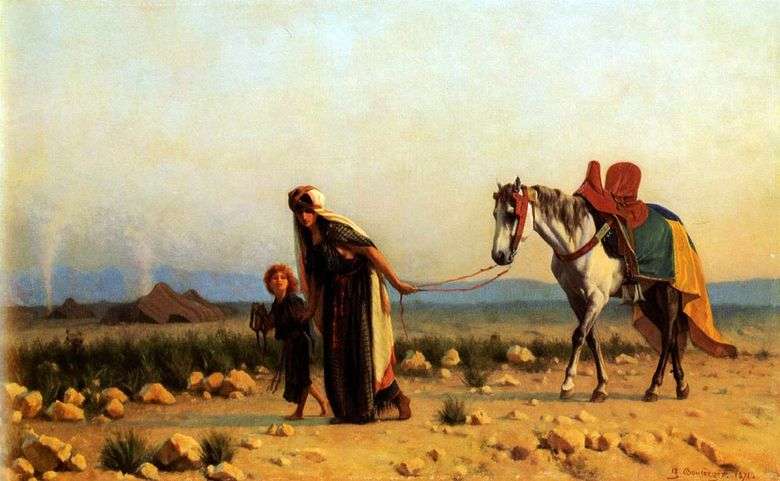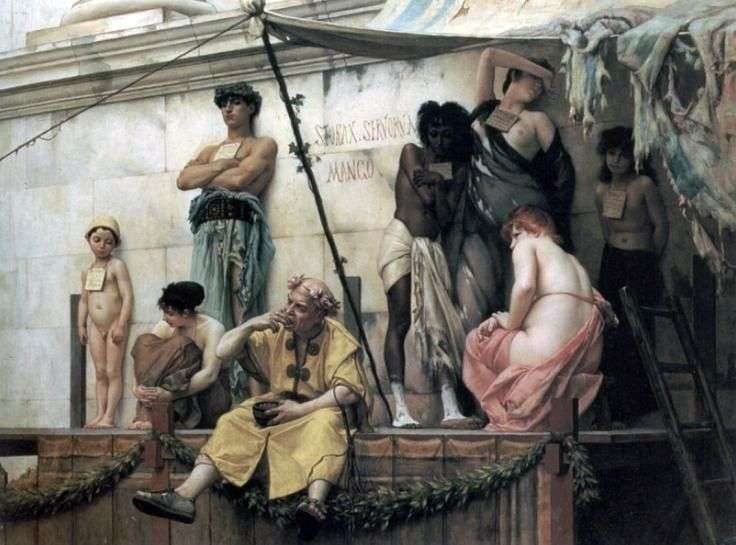
Gustav Rudolf Boulanger is a French painter, born. in 1824 in Paris, where he died in 1888. He was a pupil of Jollywe and Delaroche, and after completing the course at Ecole des Beaux arts and receiving the first award for the painting “Odyssey, recognized by Eureka”, was sent to a government account in Italy. Here B. in great detail studied Roman archeology and in the ruins of Pompeii managed to learn all the details of Roman life. This study enabled him to write many pictures of the historical genre, a fine imitation of ancient Roman painting, for the atrium of the Pompeian home of Prince Napoleon; However, above them are his paintings of the ethnographic genre, borrowed from Eastern life.
The best of his works are: “Mauritanian coffee house”; “Two Indians playing with panthers”; “Julius Caesar, suitable for Rubicon”; “Shoasses, or Arab guides”; “Rahia, or Arab shepherds”; “Kabila in flight”; “Julius Caesar at the head of the Legion”; “Cella frigidaria”; a portrait of Hamdi Bey; “Catherine I, discussing the Prut tract with Mehmet Boltagi in 1711”; “The seller of wreaths in Pompeii”; “Walk along the street of tombs in Pompeii”; “Waiting for the lord and master”; “St. Sevastian and Emperor Maximian”, and “Lukullov Feast.”
Most of B.’s paintings are of a small format, they are distinguished by the correctness and grace of the picture, skilful composition and lively, transparent color. B. received a lot of medals for his works, in 1865 became a Knight of the Order of the Legion of Honor, and in 1882 was elected to the Academy. His brushes also belong to the decorative panels “Foyer de la Danse” at the Paris Opera and in the building of the XII county’s mayor’s office in Paris, as well as a copy of Rafael’s “Weddings of Psyche and Cupid” at the Rennes Museum.
 Regreso – Gustav Rudolf Boulanger
Regreso – Gustav Rudolf Boulanger Slave Market by Gustav Rudolf Boulanger
Slave Market by Gustav Rudolf Boulanger Mercado de esclavos – Gustav Rudolf Boulanger
Mercado de esclavos – Gustav Rudolf Boulanger Retour – Gustav Rudolph Boulanger
Retour – Gustav Rudolph Boulanger Marché aux esclaves – Gustav Rudolph Boulanger
Marché aux esclaves – Gustav Rudolph Boulanger Portrait of Francois Boucher by Gustav Lundberg
Portrait of Francois Boucher by Gustav Lundberg Hope II by Gustav Klimt
Hope II by Gustav Klimt Adam and Eve by Gustav Klimt
Adam and Eve by Gustav Klimt